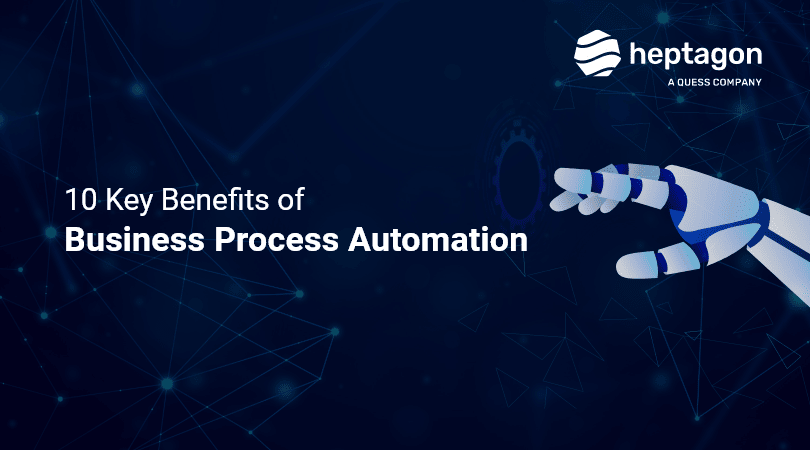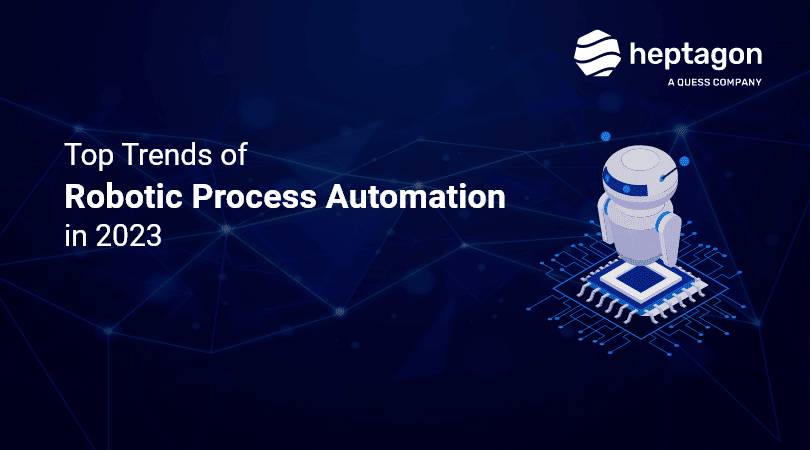Imagine working in a space with maximum efficiency, optimal utilization of resources, and where there is minimal human intervention to carry out the daily work. Business Process Automation (BPA) provides a great opportunity to bring this kind of space into reality. BPA is the practice of automating routine and manual tasks using technology and software. Gartner defines business process automation tools as “the software used to model, orchestrate and execute long-running complex business processes and simple business workflows, enabling faster execution, reduced manual efforts and error rates.”
One of the main aspects of automation is delegation. An organization needs to know which task is to be automated and which not to be. Once all of the procedures and workflows are established, exploration is done to figure out chances for automation opportunities and free up time for employees to focus on critical tasks.
Why automation and why is it important?
In an organization, there are several repetitive tasks that need to be done daily. Manually performing a huge volume of repetitive and mundane tasks invites human error which will also limit employees’ freewill to take up creative initiatives. Task Automation is done so that all the repetitive tasks are done with maximum ease and efficiency at a faster rate.
Consistency is another key factor. Customers prefer products or services which are consistent and effective in their functions. Automation will help in providing the consistency that the market needs, which may not be fully effective through manual processes. To improve its capabilities, BPA makes use of Artificial Intelligence (AI) technologies like Machine Learning (ML), natural language processing, and predictive analytics. BPA systems can use AI algorithms to analyse data trends, automate complex decision-making processes, and deliver insightful information for process improvement. Scalability, cost savings, and more effective customer interactions are a few of the other main important factors that automation helps to achieve.
What to automate?
Repetitive and Rule-Based Tasks
All the repetitive tasks that follow a set of standardized rules and norms could be process optimized to reduce errors, eliminate bottlenecks and improve overall efficiency. Robotic Process Automation (RPA) can be used to imitate human behaviour to communicate with digital systems and carry out tasks. These robots can automate a variety of business activities.
Data Analysis and Reporting
Automate data analysis processes, including creating reports and drawing conclusions from huge datasets. Systems are equipped with ML algorithms to learn from data, spot trends, and adjust to changing circumstances. It can improve the precision and effectiveness of processes.
Time-consuming processes
Identifying the tasks that take more time to complete and automating such processes will help to improve efficiency and reduce lead time.
Transactional Processes
Automate transactional procedures, such as order processing, invoicing, or inventory control. The automation of processes is essential to digital transformation activities. Businesses can convert from manual and paper-based procedures to digital workflows, which promotes agility, scalability, and better customer experiences.
Complex and Cognitive Tasks
Complex and cognitive processes are automated using intelligent automation that combines technologies like AI, ML, and cognitive capabilities. It allows systems to manage unstructured data, comprehend natural language, and make intelligent decisions, going beyond simple rule-based automation.
What not to Automate?
Personalised interactions
Full automation may not be appropriate for processes that include direct consumer encounters or that demand personalisation and empathy. Building rapport and meeting the specific demands of each consumer requires human connection and emotional intelligence. But RPA with sentiment analysis can help to improve customer satisfaction. It will help to understand the emotion or sentiment behind the feedback of the customers without having to manually sift through them one by one.
Dynamic and evolving processes
Processes that are dynamic and constantly changing should not be automated as they will have to deal with frequent adjustments. Rapidly changing requirements could be too complex for automation to handle, making manual intervention more appropriate.
High-Risk Processes
For tasks that are considered to be of high risk, maybe in terms of legal compliance, automation would not be a good idea. It can be automated, but human thinking and insights could also yield good results in such situations.
Benefits of Business Process Automation
Saves Time
BPA is one of the key players in the highly competitive business world. It helps to save time by automating all the needed tasks by reducing the manual input and costs relating to it. Manually performing a task leads to a very long and tiring procedure whereas automating it would reduce such complications and maximise the firm’s efficiency. RPA are bots that are built to perform predetermined human-like functions. They will take care of the repetitive tasks happening in the firm reducing the processing time considerably.
Increased Profits
A business firm needs to perform well financially to take forward its functions at a much more efficient level than they currently do. BPA paves the way for this by reducing labour costs and bringing in high efficiency. It ensures there is the optimal allocation of resources which leads to the minimization of waste produced. All this will collectively lead to the organization making high profits. In Forrester’s Q2 2021 Global Digital Process Automation Survey, 76% of respondents indicated they were driving toward end-to-end automation for most business processes.
Higher Productivity
In Automation, the perfect process mapping helps to understand the depth and definition of each step and what the output is supposed to be for each step. This helps to increase the productivity of the firm better than manual functioning.
Improve Operational Efficiency
Business Process Management when automated through various processes like cloud automation, low code development, Artificial Intelligence etc, reduces redundant steps and ensures standardized processes. Through workflow automation, BPA improves operational efficiency, reduces delays, and enhances the overall performance of the company. Gartner expects that by 2024, organizations will lower operational costs by 30% by combining hyper-automation technologies with redesigned operational processes.
Reduce Turnaround Times
Once automated, the handover rates get reduced considerably leading to reduced delay and speeding up the process. BPA makes sure that work is done fast and effectively, which shortens turnaround times.
Error Minimization
Error-prone manual methods are common. Aspects of BPA like digital transformation help to minimize these errors by reducing manual intervention. As a result, accuracy, data quality, and outcome reliability are all improved.
Make Better Forecasts and Production
BPA can help in better forecasts through real-time Analytics to analyse historical and current data and by that it can identify trends, patterns, and insights, enhancing decision-making capabilities. Analysing trends can be crucial to any firm as it can help it to understand the future of its company. With this analysis, the production process could be optimized with much more efficiency.
Increase Accountability
BPA makes it simpler to assign accountability to specific activities and people by enabling transparency and traceability within processes. Organisations can spot bottlenecks, address performance concerns, and guarantee responsibility at multiple levels with clear visibility into how processes are being carried out.
Improved Compliance
BPA aids businesses in adhering to legal obligations and industry norms. BPA lowers the risk of non-compliance by automating compliance checks and incorporating them into processes. This ensures that laws and regulations are constantly obeyed.
Improve Customer Satisfaction
BPA allows for quicker response times, better accuracy, and higher-quality service. Businesses may deliver quicker, more individualised services to customers by automating customer-facing activities. This increases customer happiness and loyalty. According to Gartner, “By 2025, organizations running inflexible and poorly performing critical customer-facing business processes will suffer more than a 10% loss in market share due to bad customer experiences.”
To conclude, BPA offers important benefits by automating repetitive work, optimising procedures, and utilising technology like AI and machine learning. AI and machine learning have provided further fuel for market advances in automation, enabling commercially viable products and services that can automate a growing number of routine business processes. For example, modern SaaS (software-as-a-service) solutions offer a simplified approach to automating manual processes and workflows throughout an organization and across businesses. Employees can concentrate on more worthwhile tasks because there is no need for manual labour, which saves time. Cost savings, increased effectiveness, and enhanced decision-making are other advantages of BPA and it will lead to higher earnings. Automation gives a competitive edge to organizations and they will be able to provide the required standard to their customers preparing them for long-term success in the current competitive environment.



